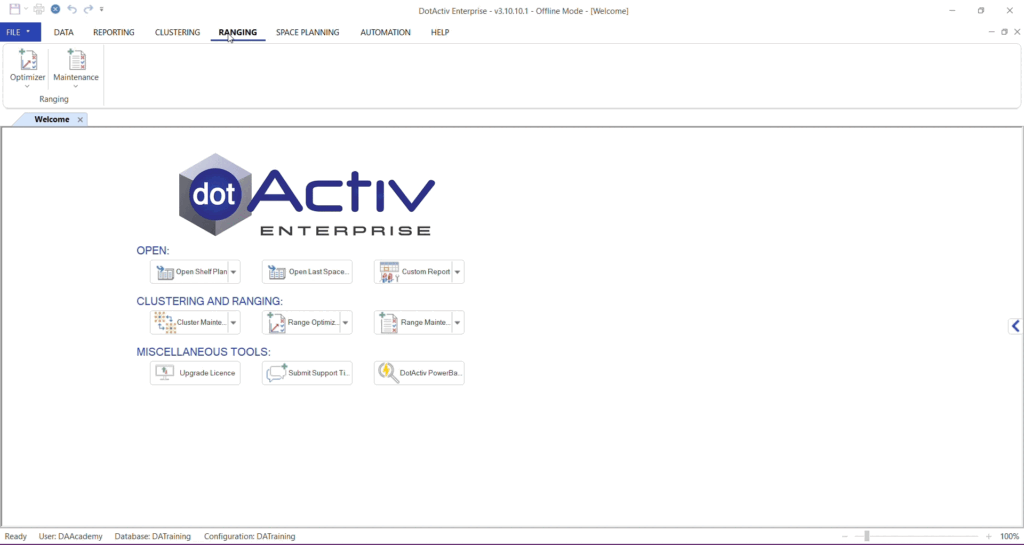This article will detail how clustering impacts the assortment planning process and help you to use the Cluster Maintenance and Range Optimiser features of the DotActiv software.
Clustering is used by retailers to respond to changes in consumer behaviour. Category-based clustering allows the different functions of category management to work together and avoid the one-size-fits-all approach to targeting customers.
The data analysis generated from this approach aids retailers in assortment planning by providing approaches based on the insights gained from cluster analysis.
Clustering Approaches
One Size Fits All
Stores within the same category receive the same product range. This method boosts economies of scale and saves time creating product ranges.
However, this does not account for different consumer profiles and subsequent consumer behaviour which occurs across different store branches, resulting in a product range that is not optimised for the store or target market.
Top-Down
This approach focuses on store-specific factors such as demographics to place categories per store into manageable clusters. The retailer is able to understand the consumer behaviour of the target market without requiring sales data.
However, they may miss the opportunity of recognising customer trends and purchasing patterns.
Bottom-Up
Stores are grouped according to consumer demands per category. This technique uses sales and demand forecast data at a stock-keeping unit (SKU) level. Product attributes such as brand, pack size and price are also considered.
This approach provides insights into the consumer decision-making process and customer preferences per category. Once the clusters have been identified, shopper profiles are created to provide insight into customer preferences.
Store-Specific
This approach treats each store as its own cluster with individual buying responsibilities. This method proves to be labour and time-intensive and does not facilitate beneficial price negotiations for retailers.
Brand identity is also lost as customers cannot know what to expect in each branch of their chosen retailer.
Using the DotActiv Enterprise software, you can use cluster maintenance to create and maintain your clusters. Once this step has been completed, the range optimiser feature can be used to assist you in creating customer-centric ranges as seen in the gif below.

The process ultimately gives rise to increased turnover, customer satisfaction, lower inventory costs and an improved in-store experience.
